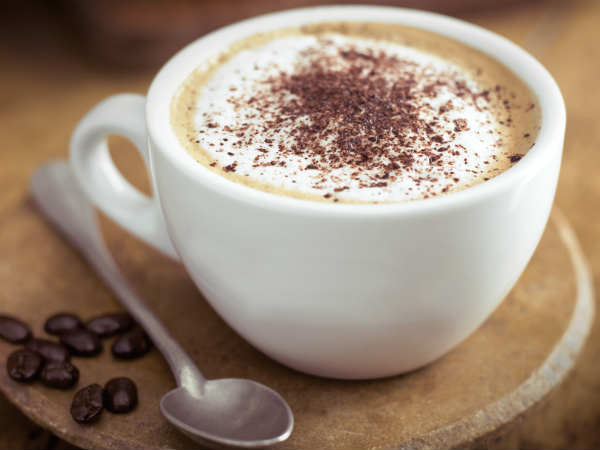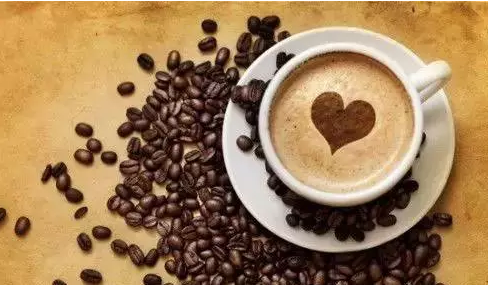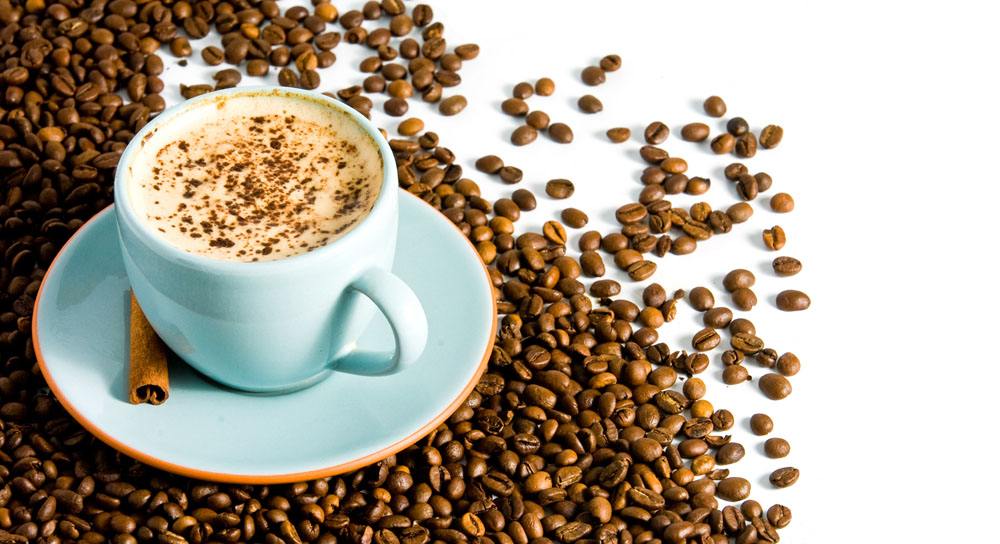Why is roadside coffee in Japan better than coffee in the Chinese market?
Follow the caf é (Wechat official account vdailycom) and found that Beautiful Cafe opened a small shop of its own.
Japan is also a big coffee country.
At first, the Japanese, like all East Asians, were not used to the taste of coffee. The Japanese live in peace and learn from the Chinese, drinking light and meaningful green tea.
The first Dutch priest who landed in Nagasaki took out a can of coffee from his suitcase to entertain the locals.
The first person who tried could not help spitting out the liquid in his mouth. "it's like cough potion." This is probably a metaphor that everyone will use.
Who would have thought that after more than 100 years of development, Japan has become the third largest importer of coffee in the world, second only to the United States and Germany.
Starbucks was full early in the morning, men and women, young and old, lined up, and when it was their turn, he hurriedly said, "one cappuccino, two doughnuts." Eat and go, or walk directly in a bag, because you have to go to work in a hurry.
This is the situation where big cakes Youtiao and tofu pudding are sold in the breakfast shop in Beijing.

In large chain coffee shops, you can't drink good coffee or even smell the aroma of coffee, but you can smell the sweet and sour sugar boiled in the water.
If you want to drink pure good coffee, you must go deep into the narrow canyon streets of Japan, where there are many small shops of crouching tigers, hidden dragons.
The Japanese are serious about making coffee.
Unlike Starbucks, every coffee shop in Japan is original and has its own understanding of coffee. In Tokyo or Kyoto, the basic condition of a good coffee shop is hand-brewed coffee.
Hand-brewing coffee is not a mechanized and standardized activity, on the contrary, what hand-brewing coffee pursues is individualization, specialization and stylization.
Good shopkeepers are addicted to details, make a cup of coffee, but Madame Curie refines radium, interested, and even use the balance to weigh coffee beans.
These small shops rarely use cheap propeller grinders because they cut rather than grind coffee beans.
The heat generated by the propeller blade lacks an effective way to dissipate heat, which will heat the coffee beans and release the aroma ahead of time, and the coffee particles treated by the propeller grinder are uneven in thickness, dark on the surface, and even lumpy.
Small coffee shops in Japan like to use roller-type electric grinders or even hand-held grinders to shake, stop and carefully examine the condition of coffee beans.
The wonderful idea of Japanese Coffee
The varieties and styles of Japanese coffee are very complicated. Even a cappuccino looks different. Add half a cup of whipped cream to the coffee and sprinkle it with cinnamon powder. You have to dig deep with a spoon before you can find the coffee underneath. Sometimes you will send a small piece of laurel instead of a spoon.
And add ice cream balls to the coffee, add iced milk, put it in a deep glass, and put a straw in the sundae.
In addition, there are many ingenious royal jelly coffee, pineapple coffee, coconut milk coffee, lace coffee. This is unheard of in most Italian cafes.
Europeans sneered when the Japanese added 2/3 milk to their coffee, chilled it in the fridge and named it iced coffee, which was popular in cafes across Japan.
You know, "drinking while it's hot" is a necessary virtue for tasting coffee in Europe, even on hot summer days.
But no matter how unhappy the Europeans are, the Japanese will never stop their research and innovation in coffee. If the Japanese coffee mentioned above is just a kind of floating mash-up improvement, then the coffee mentioned below is amazing.
For example, the most classic charcoal-roasted coffee, the Japanese improve the traditional European coffee roasting method. Coffee beans are roasted with charcoal fire and have a darker color. The brewed coffee tastes bitterer than ordinary coffee, but it is not astringent and sour. Careful taste will have a mellow flavor.
In addition, there is "Sleeping Water Coffee", which is a graded extract of caffeine. It contains very low caffeine and retains its original fragrance, which helps to sleep.
There is also shade dry coffee specially prepared for women in Japan, which is different from the general hot air dryer, so it is extremely rare. The newly harvested Brazilian coffee beans are placed in a cool place for 60 to 70 days while the germ is still green, so that the sugar in the flesh completely seeps into the coffee beans during the drying process, like a gentle and gentle feminine taste. A layer of fragrant and slippery milk film, swirling with a touch of seductive charm, the aroma is long-lasting and solid.
As for the gourmet Blue Mountain, it is the best in coffee, known as the "coffee beauty". The coffee beans produced by the Blue Mountains in Jamaica above sea level above 1500 meters above sea level have an annual global output of only more than 60 tons, which is extremely precious. In the past, it was not easy to drink a cup of authentic Blue Mountain.
Japan began to buy out Blue Mountain Coffee as early as half a century ago. At that time, Japan had just made its first bucket of gold from the logistics of the Korean War, but it was far from rich and its financial resources were still meagre.
But even under such circumstances, Japan would rather tighten its belt than spend a lot of money to help the poorer Jamaican town government solve the problem of the degradation of blue mountain coffee varieties in exchange for permanent global exclusive distribution rights for blue mountain coffee beans.
Turning other people's things into their own requires not only an indomitable spirit of experimentation and discerning cuisine, but also the determination to do a good job in every detail.
Important Notice :
前街咖啡 FrontStreet Coffee has moved to new addredd:
FrontStreet Coffee Address: 315,Donghua East Road,GuangZhou
Tel:020 38364473
- Prev

A bed, a hotel, a coffee shop can sell it.
Follow Cafe (Wechat official account vdailycom) found that Beautiful Cafe opened a small shop of its own, with only one bed, you read it right! This Swiss open-air hotel has no roof, not even toilets and bathrooms! However, you can sleep in the open air in the beautiful Alps, even if you can't take shelter from the wind and rain, people are still willing to spend hundreds of dollars.
- Next

Taste period, shelf life, stupid distinction. Don't say you can drink coffee.
Following Cafe Review (Wechat official account vdailycom) found that Beautiful Cafe opened a small shop of its own. Coffee has entered the aesthetic era of boutique coffee from the instant era to the era of Starbucks products. The purpose and requirements of people drinking coffee have been more and more pursuing the wonderful flavor and plant authenticity like tasting red wine. On shelf life: the shelf life of prepackaged food refers to the safety of the product.
Related
- Why can American refills for free? The difference between Americano and American drip pot coffee
- Being chased out of the rain in front of Starbucks?! Store: Sheltering from rain under umbrellas poses a safety hazard
- The white moonlight has changed?! Lucky launches "Big Winter Pear American"
- Hand-brewed coffee three-stage method, high-sweet and universal brewing method to share! What does the high sweet water level of hand-brewed coffee mean?
- What is the difference between raw, refined and full espresso coffee? How to extract espresso and taste good?
- A complete list of coffee bean names and their meanings! What is Yejia Shefi coffee? Where is Mantelin coffee?
- What grade does Arida Manor Kaduai coffee beans belong to? What treatment is Arida ASD slow anaerobic sun exposure?
- The milk tea cup becomes smaller?! Overlord Tea Girl launches a new "Return to Yunnan" series
- Accused of selling counterfeit and high-priced coffee beans! Well-known boutique coffee brand "Oukelao" bowed and apologized!
- How to make espresso dumplings? Can I eat coffee and glutinous rice balls together?

